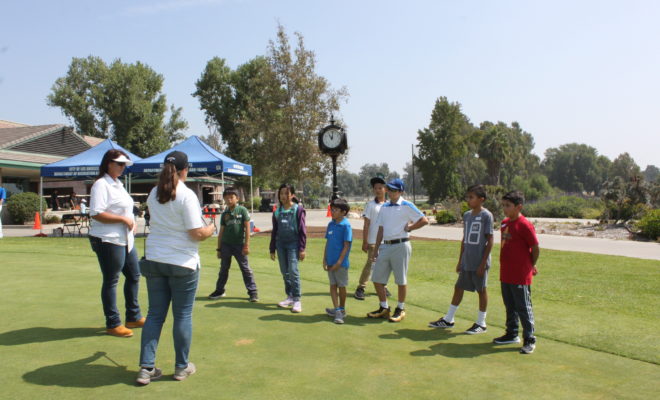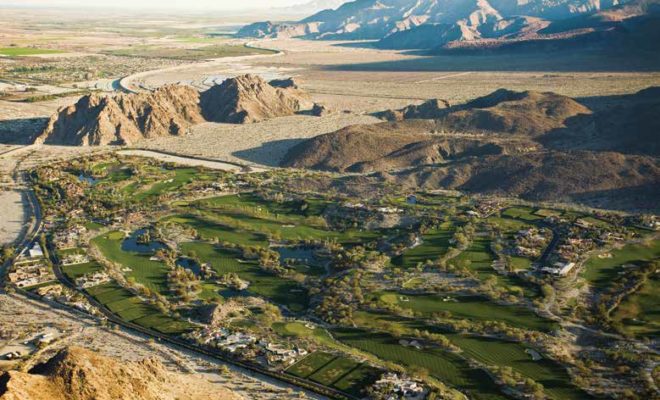STAKEHOLDER INPUT

It’s not always what the game can do for us, it’s what we can do for the game
WHILE PARTICPATING AS A PANELIST at the California Community Golf Summit, I posed two questions to an audience of golf industry and recreation department leaders. I asked, “Considering that there are approximately 460 golf courses in Southern California today, how many of you anticipate that figure expanding to at least 500 in the next 50 years?”
I paused for the response, but no hands were raised. Then I asked the attendees, “How many of you anticipate that figure remaining at 460 or more courses?” I paused again … no hands. The mood in the room became more subdued.
Audience members understood why I had asked the two questions. How could industry leaders reconcile the joy they should be feeling due to record participation, broadened demographics, the benefits of tech enhancements, the synergies created by virtual and “entertainment” versions of the game and increased exposure in popular culture (e.g., social media, television, movies, streaming services) with their failure to raise their hands?
The industry insiders’ bearishness that day was justified. Land values, labor costs and the price of water have increased dramatically in recent years; the real costs of providing the game have routinely outpaced the regional consumer price indices throughout the state.
No silver bullet can reverse these trends; too much about them is beyond the capacity of the golf community to control. But inability to control is not inability to affect. The golf community need not be resigned to burying its head in the sand.
As the day continued, I was asked by several attendees how individual golfers can become advocates for their home courses, their clubs and the game. The questions were varied, but there was one common theme in each answer I gave. There are decisions taken every single day in Southern California that affect golf facilities; wherever and whenever those decisions are taken, golf advocates need to be present.
Stakeholder input is an investment in the future. Whether participating in public meetings, writing letters to decision-makers, making phone calls — action always helps. The advocates who participate in public processes on golf’s behalf will not always be successful, and it’s impossible to pinpoint a return on investment with each campaign. But the results are clear. The golf community will fare better because of that stakeholder input and participation in public processes than would ever be possible without it.
Golf is at a disadvantage in its community organizing efforts, because golfers typically play to detach from the pressures of daily life, not to become active in public policy matters or attend public meetings in what can often be uncomfortable settings. However, on those occasions when they have been called upon, they have responded with passion, intelligence, clarity and civility.
“Securing golf’s future is a worthy cause; a golf advocate will know defeat, but only by being in the arena will golf be capable of knowing victory as well.”
Approximately nine percent of the state’s population plays golf (a “golfer” is defined as someone who plays at least one round per year on a green grass course). That percentage may not seem significant, but when compared with other recreational user communities, golf is among the leaders.
3.5 million Californians who are singularly passionate about anything represent a group incapable of being ignored — but only if they are organized, focused, savvy and respectful of the greater audience that doesn’t share their passion.
Many golf courses in Southern California are facing, have faced, or will face a direct challenge to their very existence. And while it is in those moments that the golf community must speak or forever hold its peace, engagement in the public square on a regular basis is a better option. The best form of crisis management is doing the work to avert a crisis before it begins.
Whether that forum for public input is a golf advisory committee, planning or park commission, city council, board of supervisors, water district board, regulatory body or legislature, the golf community is capable of being as actively engaged as it chooses to be. The more participation in the public square, the better the likelihood of a positive result.
The Summit’s attendees were persons highly motivated to address the game’s challenges and to develop strategies capable of meeting them. With a “tongue in cheek” nod to a few of President Teddy Roosevelt’s most famous and oft-repeated words — securing golf’s future is a worthy cause; a golf advocate will know defeat, but only by being in the arena will golf be capable of knowing victory as well.
Golf has many advocates “in the arena.” But it could use more.










